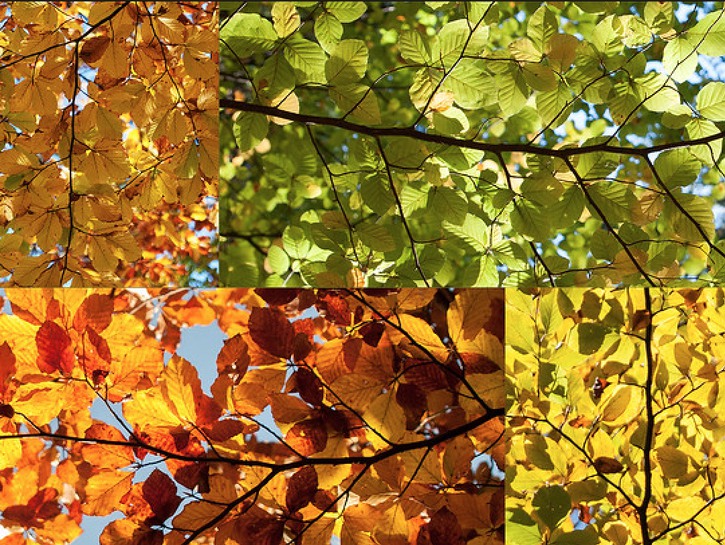How Do You Identify A Beech Tree?
- Bark: Beech trees are known for their smooth, gray bark and massive straight trunks.
- Leaves: Saw-tooth edges that are about 6 inches long and 2.5 inches wide. Leaves are dark green in summer, changing to golden bronze in fall.
- Flowers: Male flowers are small, yellow, and grow in clusters along the branches. Female flowers are tiny, red, and after pollination produce edible beech nuts.
- Beechnuts: Enjoyed by many small animals and are tolerable for human consumption. However, they need to be cooked before eating them. When raw, they contain the toxin saponin glycoside, which can cause gastric issues if you eat a large quantity of raw beechnuts.

American Beech
American beech trees are the most common type of beech tree. They can be found in large, park-like landscapes such as university campuses, linings of long driveways, graveyards, and most forests. They are perfect shade trees and make for excellent firewood.
- Floral Name: Fagus Grandifolia
- Other Common Names: North American beech, gray beech, red beech, ridge beech, Carolina beech, white beech
- Height: 75-100 feet
- Sun Exposure: Full sun is best, tolerates some shade
- Native Area: North America
- USDA Zone: 4-7

Joseph Hollick/Flickr
Tri-Color Beech
The tri-color beech has purple leaves with an irregular rose and pinkish white border. It is a smaller cultivar than the rest of the species. The tri-color beech is perfect for smaller city lots and front-yard statements. It is used for shade, along an entry drive or as a street tree. It can be both an accent among evergreens or planted in a grove and its color will be prominent from a distance.
- Floral Name: Fagus sylvatica
- Other Common Names: Roseo-Marginata, European beech
- Height: 25-35 feet
- Sun Exposure: Does best in partial shade as too much sun may burn the variegated leaves
- Native Area: Europe
- USDA Zone: 4-7

Jason Arney/Flickr
Japanese Beech
Japanese beech trees resemble bonsai because of their curving, spiral-shaped trunks, white bark and small, pointed leaves.
- Floral Name: Fagus crenata
- Other Common Names: Buna, Siebold’s beech
- Height: 70-90 feet
- Sun Exposure: Full sun is best; can tolerate light shade
- Native Area: Japan
- USDA Zone: 4-7

Copper Beech
Copper beech trees are useful for shady landscapes and naturalized or woodland gardens. New leaves emerge reddish-purple, changing to dark green, then turn yellow to orange-red in the fall, offering a kaleidoscope of color throughout the year.
- Floral Name: Fagus sylvatica Purpurea or Fagus sylvatica Atropunicea
- Other Common Names: Purple beech
- Height: Up to 100 feet
- Sun Exposure: Full sun to partial shade
- Native Area: Europe
- USDA Zone: 4-7

European Beech
The European beech is often used as hardwood in Europe. It is also commonly found lining parkways or golf courses and it can tolerate a wider range of soils than other beeches.
- Floral Name: Fagus sylvatica
- Other Common Names: Common beech
- Height: 60-80 feet
- Sun Exposure: Full sun to partial shade
- Native Area: Europe
- USDA Zone: 4-9

A3pfamily/Shutterstock
Planting Tips
Here are some things to keep in mind when planting a beech tree:
- Soil: Rich, moist, acidic soil that isn’t compacted.
- Planting: It’s important to dig a 2-3x wider hole than the root ball in order to loosen up the soil. Roots must also be given 40-60 feet to spread.
- Watering: Freshly planted beech trees need plenty of water. Water them daily. Younger trees also retain water better with a 2-3 inch layer of mulch around the root zone.
- Fertilization: Regular fertilization is necessary. Use a pound of 10-10-10 fertilizer for each 100 square foot of the root zone. The root zone extends a foot beyond the canopy.
